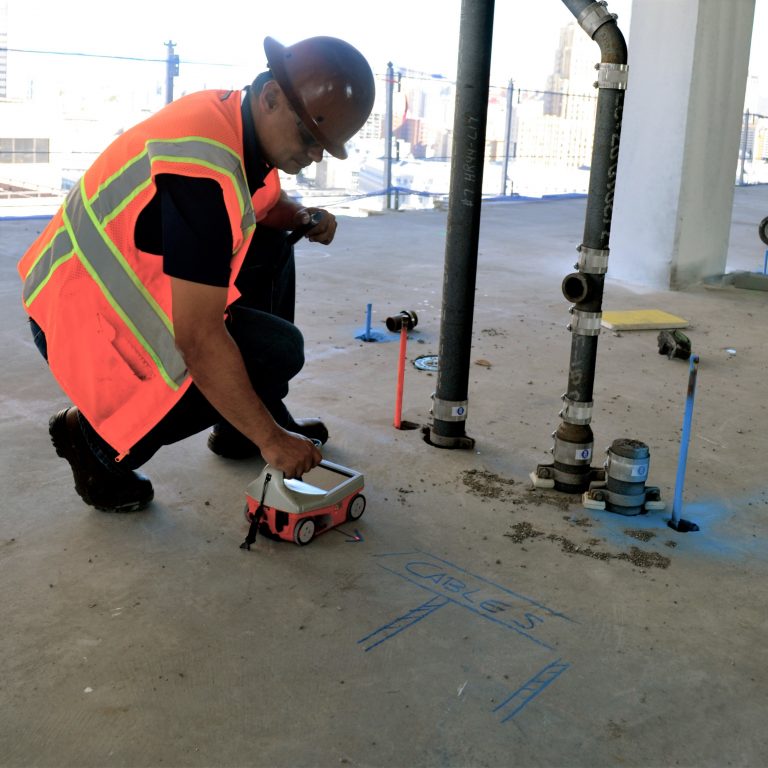Key Benefits of Utilizing Concrete Scanning Technology
Key Benefits of Utilizing Concrete Scanning Technology
Blog Article
Reveal the Transformative Power of Concrete Scanning in Taking Full Advantage Of Efficiency and Safety
Concrete scanning has actually emerged as an important tool in the building and construction sector, providing unequaled benefits in boosting project effectiveness and guaranteeing security standards. The transformative power of concrete scanning lies in its capacity to offer real-time data and comprehensive insights, reinventing just how jobs are planned and performed.
Value of Concrete Scanning
Guaranteeing the architectural honesty and security of construction jobs starts with the critical step of carrying out comprehensive concrete scanning. Concrete scanning is a non-destructive method utilized to find and map subsurface components within concrete frameworks.
Furthermore, concrete scanning helps in optimizing job timelines and budget plan by staying clear of unexpected expenses and delays that may occur due to unanticipated obstructions within the concrete. Ultimately, investing in detailed concrete scanning is an aggressive approach that boosts both performance and safety and security in building and construction jobs.
Exactly How Concrete Scanning Works
Concrete scanning runs as a vital tool in building and construction tasks by utilizing innovative innovations to discover and map subsurface aspects without triggering architectural damages. Ground Penetrating Radar (GPR) and Electromagnetic Induction (EMI) are two key techniques used in concrete scanning.
Throughout the scanning procedure, the data accumulated is assessed in real-time, permitting instant recognition of prospective hazards or barriers below the surface. This info help in decision-making, guaranteeing that construction activities continue securely and effectively. Additionally, 3D imaging software program can be utilized to produce topographic maps of the subsurface components, even more enhancing job preparation and execution. By utilizing these innovative modern technologies, concrete scanning dramatically lowers the risk of expensive problems and injuries on building and construction sites.
Benefits of Concrete Scanning
One of the primary advantages of concrete scanning is the ability to detect and locate ingrained objects such as rebar, post-tension wires, and channels accurately. Concrete scanning aids in preparation and designing more effectively, as it supplies specific info concerning the place and depth of architectural parts.

Study: Concrete Scanning Success

In one more case, a building company utilized 3D concrete scanning to assess the problem of maturing concrete structures in other a historical structure. The in-depth scans provided useful insights into the level of deterioration and helped focus on maintenance efforts successfully. By proactively attending to locations of concern determined via scanning, the firm was able to prolong the life-span of the framework and guarantee owner safety.
These study highlight the transformative power of concrete scanning in enhancing effectiveness, precision, and safety and security in construction jobs.
Implementing Concrete Scanning in Projects
Executing sophisticated scanning innovations throughout building and construction projects has actually come to be increasingly necessary for boosting accuracy and safety and security. By incorporating concrete scanning right into job planning and execution, building teams can determine prospective threats, such as rebar or post-tension cords, concealed within concrete frameworks. This aggressive strategy minimizes the threat of accidents, delays, and pricey rework, ultimately bring about a lot more effective project timelines and budgets.
To carry out concrete scanning efficiently, job managers ought to collaborate closely with knowledgeable scanning specialists to establish he said one of the most appropriate scanning techniques for the specific task demands. Engaging scanning specialists from the onset of a project enables the team to create thorough scanning strategies that deal with key locations of worry and ensure complete data collection.
Additionally, incorporating concrete scanning right into routine job process can simplify decision-making procedures, as real-time scan information offers instant insights right into the condition of concrete frameworks - Concrete Scanning. This data-driven method facilitates educated analytic and makes it possible for teams to make changes immediately, fostering a society of performance and security throughout the task lifecycle

Final Thought
In verdict, concrete scanning plays a crucial role in boosting effectiveness and safety and security in construction jobs. By making use of advanced innovation to spot and map out underlying frameworks within concrete, this process aids to protect against costly errors, make certain structural stability, and minimize dangers on site. With the ability to discover hidden aspects and offer precise information, concrete scanning verifies to be a useful device for maximizing project outcomes and maximizing general success.
Concrete scanning is a non-destructive technique used to detect and map subsurface aspects within concrete frameworks. In addition, concrete scanning helps in maximizing project timelines and budget by avoiding unforeseen costs and delays that may develop due to unpredicted blockages within the concrete. One notable case study includes a massive restoration job where concrete scanning played an essential role in guaranteeing task success.In one more instance, a building and construction firm used 3D concrete scanning to evaluate the condition of maturing concrete frameworks in a historic building. By incorporating concrete scanning right into job planning and execution, construction teams can determine potential threats, such as rebar or post-tension wires, concealed within concrete structures.
Report this page